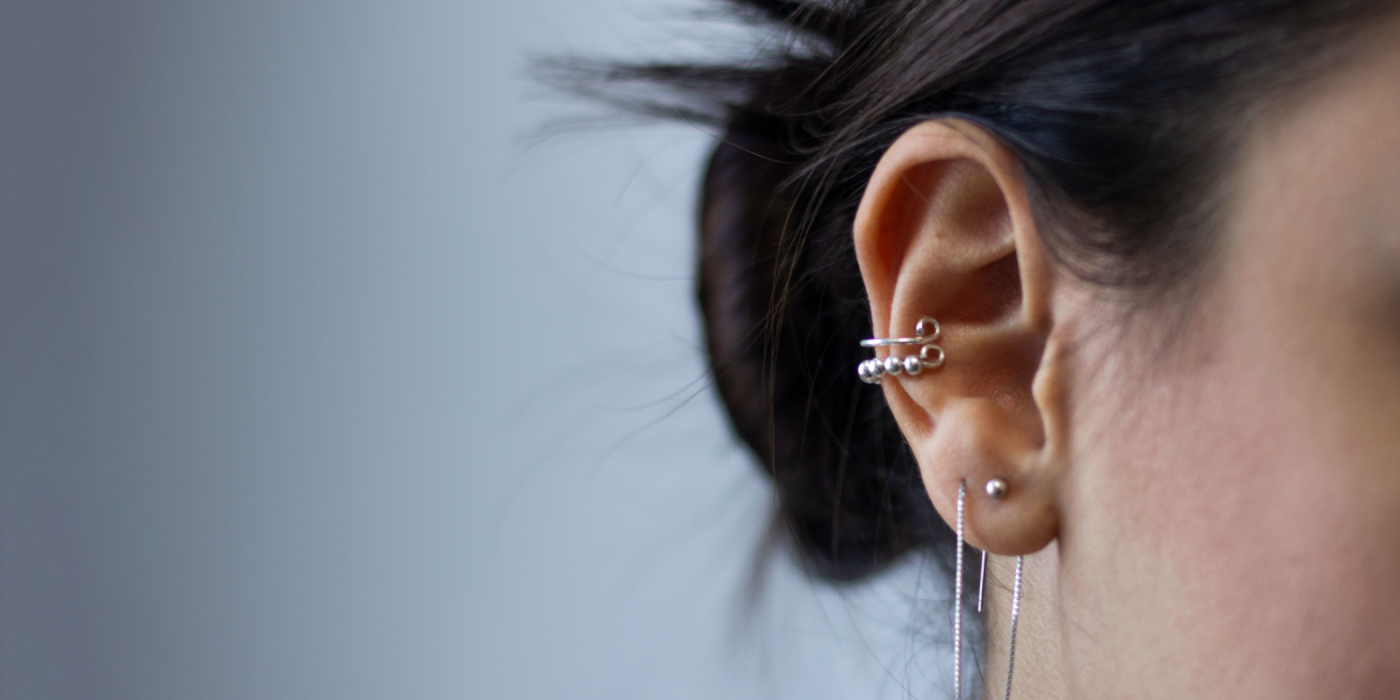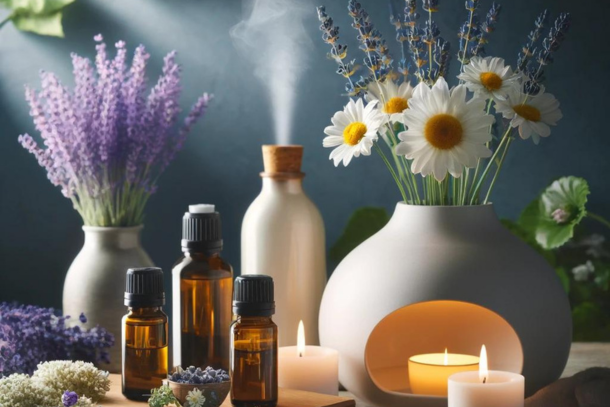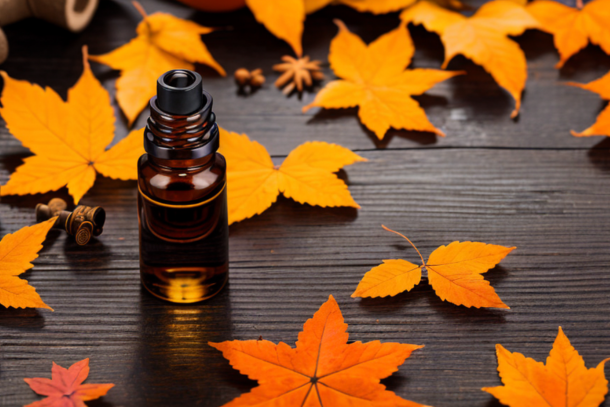Uncovered: Exploring the Healing Power of Pressure Points

Reflexology is a unique type of massage therapy focusing on specific pressure points within your feet, hands, and ears. These points are believed to correspond with different organs and systems within the body. By manipulating these areas, reflexologists aim to promote health, wellbeing, and balance in the body.
The Importance of Understanding Reflexology
The understanding of reflexology is essential for several reasons. First, it empowers individuals with the knowledge of a holistic approach to wellness. By connecting the body's intricate systems through these pressure points, we can better appreciate the body's innate ability to heal and maintain itself. Furthermore, knowing the basics of reflexology enables one to communicate more effectively with professional reflexologists and actively participate in their wellness journey.
What we will be covering
In this article, we will delve into the fascinating world of reflexology. We'll explore the historical background of this therapy and explain the principle behind its operation. We'll guide you through the key reflex points in the hands, feet, and ears and their correlation to different body parts.
Next, we'll review the myriad of benefits reflexology can offer, supported by scientific studies and personal experiences. We'll also walk you through some basic techniques, empowering you to try reflexology for self-care at home.
Moreover, we'll advise you on how to find and choose a certified reflexologist in the UK. Finally, we'll consider the precautions associated with reflexology, discussing who should avoid it and the importance of consulting with a healthcare provider before starting treatment.
Understanding Reflexology
The Historical Background of Reflexology
Reflexology, an ancient form of therapy, has deep roots in multiple civilizations. From early Egyptian tomb art illustrating foot massages to ancient Chinese and Indian societies using pressure point therapies, the art of reflexology spans thousands of years. The modern understanding of reflexology, however, was largely influenced by the work of Eunice Ingham in the 1930s, often regarded as the 'Mother of Reflexology.'
Eunice Ingham and the Birth of Modern Reflexology
Ingham, a physiotherapist, built on previous work by Dr. William Fitzgerald's zone therapy. She developed an intricate map of the feet, linking specific areas on the feet to corresponding body parts, forming the foundation of contemporary reflexology.
How Reflexology Works: The Principle Behind Reflexology
Reflexology operates on the premise that our body is divided into ten vertical zones, with each zone corresponding to fingers and toes all the way up to the head. By applying pressure to specific points on the hands, feet, and ears (termed reflex points), reflexologists can stimulate the energy flow along these zones, clearing any blockages, and promoting health and wellbeing in the corresponding body organ or system.
The Connection: Body Parts and Reflex Points
In reflexology, the hands, feet, and ears are viewed as a mirror image of the body. Each reflex point correlates to a particular organ or body part. For instance, the tips of the toes reflect the head, the heart and chest are around the ball of the foot, the liver, pancreas and kidney are in the arch of the foot, and the lower back and intestines are towards the heel. By manipulating these reflex points, a reflexologist may impact the health of the associated body parts.
The Reflexology Points: Feet, Hands, and Ears
Descriptions of Key Reflex Points
In reflexology, the feet, hands, and ears are considered to be mirror images of the body, with specific points correlating to different organs and body parts. A reflexologist uses detailed maps of these points to guide their treatment.
Feet Reflex Points
The feet are particularly rich in reflex points. For example, the tips of the toes correspond to the head and brain, while the ball of the foot mirrors the chest and heart. The arch maps to internal organs like the liver, kidney, and spleen, and the heel represents the lower body, including the lower back and intestines.
Hand Reflex Points
In the hands, the fingers correspond to the head and sinuses, the top of the palm to the heart and lungs, and the lower palm to the digestive system. The wrist area represents the reproductive system.
Ear Reflex Points
The ear contains numerous reflex points. The earlobe corresponds to the head and heart, while the middle part of the ear correlates with organs in the upper body. The upper parts of the ear reflect the lower parts of the body.
Correlation Between Reflex Points and Body Parts/Organs
Every reflex point on the foot, hand, or ear corresponds to a specific organ or body part. When a reflexologist applies pressure to these points, it stimulates the corresponding body part, promoting health and well-being.
The Concept of 'Zones' in Reflexology
Reflexology also operates on the concept of 'zones'. The body is divided into ten vertical zones, each corresponding to specific fingers and toes. This 'zone theory' allows a reflexologist to target a specific area of the body by applying pressure to the related zone on the foot or hand.
Benefits of Reflexology
Reflexology has been hailed as an effective alternative therapy with numerous potential benefits. This section delves into the health and wellbeing improvements it can bring, supports these claims with scientific studies, and highlights personal testimonials from those who have experienced its benefits first-hand.
How Reflexology Improves Health and Wellbeing
Reflexology operates on the premise that stimulating certain points on the feet, hands, and ears can promote health in corresponding organs and body parts. When applied properly, it's believed to restore the body's equilibrium, boosting overall health. Among the wide range of purported benefits, it can potentially help to:
- Reduce Stress and Anxiety: Reflexology is commonly employed as a natural stress reliever. The massage technique can induce a deep state of relaxation, helping to alleviate stress and anxiety.
- Pain and Tension Relief: It's often used for pain management, particularly for headaches, migraines, and neck, or back pain.
- Improve Sleep: Some individuals use reflexology to combat insomnia and improve sleep quality.
Scientific Studies Supporting Reflexology
A number of studies lend support to the therapeutic potential of reflexology. For instance, a study published in the "Journal of Advanced Nursing" found that reflexology reduced pain and anxiety in patients with breast and lung cancer, however, to note that more extensive research is required to validate these findings universally.
Personal Testimonials and Experiences
Many individuals have shared their positive experiences with reflexology. Some report a marked decrease in stress and anxiety levels, while others cite improvements in chronic pain conditions and sleep quality. These personal accounts provide an invaluable perspective, further solidifying the potential benefits of this ancient practice.
Techniques of Reflexology
The Basics of a Reflexology Session
A reflexology session typically begins with a brief consultation where the reflexologist reviews your health history and discusses any specific concerns or goals for the session. The practitioner will then guide you to a comfortable reclining chair or massage table where you will remain fully clothed except for your feet and, if necessary, hands.
Next, the reflexologist will start by warming up your hands or feet, often using soothing massage techniques. Once prepared, they will use their hands, fingers, or a special tool to apply pressure to the reflex points on your feet, hands, or ears.
Explanation of Reflexology Techniques
There are several techniques that a reflexologist may use during a session. The most common is the 'thumb walk', where the practitioner uses their thumb or finger to walk across the reflex points, applying pressure and stimulation. 'Finger walking' is another technique where the fingers are used to apply pressure and walk across the reflex points.
Other techniques include 'hook and back up', used to clean and energise the reflex points, and 'rotation on a point', where the practitioner presses a reflex point and rotates their thumb or finger on it. Each technique serves a specific purpose and can stimulate different responses in the body.
DIY Reflexology Techniques for Self-Care at Home
While it's beneficial to see a professional reflexologist, there are also simple techniques you can do at home to enhance your wellbeing. One of the simplest is a foot massage - by applying pressure to different points on your feet, you can target specific areas of your body. Remember, always start gently and increase pressure as comfort allows.
There are many reflexology charts available online that map the feet, hands, and ears to corresponding body parts. Use these as a guide for your home reflexology routine. Remember, consistency is key to the best results.
Note: Always consult with a healthcare professional before starting any new health practice at home.
Finding a Reflexologist
How to Choose a Certified Reflexologist
When looking for a reflexologist, it's crucial to find a certified practitioner. The Association of Reflexologists (AoR) and the British Reflexology Association (BRA) are two professional bodies that certify practitioners. They ensure that members adhere to high professional standards and ethics. Therefore, choosing a reflexologist who is a member of these bodies can give you confidence in their qualifications and experience.
Important Things to Consider When Selecting a Reflexologist
Choosing the right reflexologist involves more than just certification. You should also consider their level of experience, areas of specialisation, and customer reviews. A good practitioner should be able to explain their approach, what techniques they use, and what results you can expect. Additionally, it's important to feel comfortable with your reflexologist, so a personal rapport can be a deciding factor.
Location and Accessibility
When selecting a reflexologist, you should also consider the location of their practice. Ideally, it should be easily accessible and offer a calm and relaxed environment.
What to Expect from Your First Reflexology Session
On your first visit, the reflexologist will typically conduct an initial consultation to understand your health history and specific needs. The treatment itself involves the reflexologist applying pressure to specific points on your feet, hands, or ears. This process should be relaxing and not cause discomfort. After the session, they may discuss their findings with you and suggest a treatment plan. Remember, every individual's experience with reflexology is unique, so it's crucial to communicate openly with your practitioner.
Reflexology Precautions and Considerations
Despite the multiple benefits that reflexology can offer, it's crucial to understand that it may not be suitable for everyone. Therefore, being aware of its precautions and considerations is essential.
Who Should Avoid Reflexology and Why
Reflexology, like any other therapeutic treatment, comes with contraindications. Individuals suffering from foot ulcers, recent injuries, or vascular disease of the legs or feet should avoid foot reflexology. Similarly, those with hand conditions like carpal tunnel syndrome or recent hand injuries should be cautious about hand reflexology. People with severe heart conditions, those currently pregnant or undergoing cancer treatment may also need to avoid or modify reflexology treatments due to the body's heightened sensitivity.
Possible Side Effects and How to Handle Them
Reflexology is generally a safe practice, but it can occasionally lead to certain side effects. These can include temporary feelings of dizziness, nausea, emotional sensitivity, or tiredness. In some cases, reflexology can stimulate detoxification which may make you feel slightly unwell. These symptoms usually pass quickly and can be managed by staying hydrated, resting, and gently moving to encourage circulation. However, if these side effects persist, it's important to seek medical advice.
Importance of Consulting with a Healthcare Provider
Before beginning any reflexology treatment, it's highly recommended to consult with your healthcare provider, especially for those with chronic health conditions. While reflexology can complement conventional medical treatment, it should not replace it. A healthcare provider can provide a comprehensive view of your health status and guide you on whether reflexology is an advisable option. This step is particularly important if you're under medication or are dealing with a serious health issue.
Summing Up The Power of Reflexology
Reflecting upon our journey through the world of reflexology, it's evident that this ancient practice offers more than just a soothing massage. By stimulating specific pressure points on our feet, hands, and ears, reflexology can potentially unlock numerous health benefits. These can range from stress relief and enhanced circulation to improvement in bodily functions and overall wellbeing.
Embracing Reflexology as Part of Your Wellness Routine
Your Wellness Journey
Reflexology isn't just for those who are unwell; it's an ideal tool for anyone striving for a balanced and healthy lifestyle. As part of your wellness routine, reflexology can provide a holistic approach to maintaining your physical, mental, and emotional health. The magic lies in its simplicity and accessibility, allowing you to practice certain techniques at home or under the guidance of a professional.
Incorporating Reflexology
If you're intrigued by the potential benefits of reflexology, why not give it a go? Start small, perhaps with a self-administered foot massage, focusing on the reflex points we discussed earlier. Alternatively, you might want to invest in a session with a professional reflexologist, especially if you have specific health concerns.
Related to this article are the following:
I do hope you have enjoyed this article and hope that you will subscribe to my newsletter so you can get the latest information about all things naturally relaxing.
Stay in touch, join the Naturally Relaxing Newsletter
Newsletter Signup
Post Your Comments
or post as a guest
Be the first to comment.
Latest articles in Relaxation

Capturing the Perfect Sunset: Tips and Techniques

The Benefits of Aromatherapy: Essential Oils for Relaxation

Embracing Calm: Innovative Ways to Relax in the New Year

Autumn Aromatherapy: Essential Oils for Relaxation

Embracing Autumn's Tranquillity: Finding Peace in the UK's Golden Season






